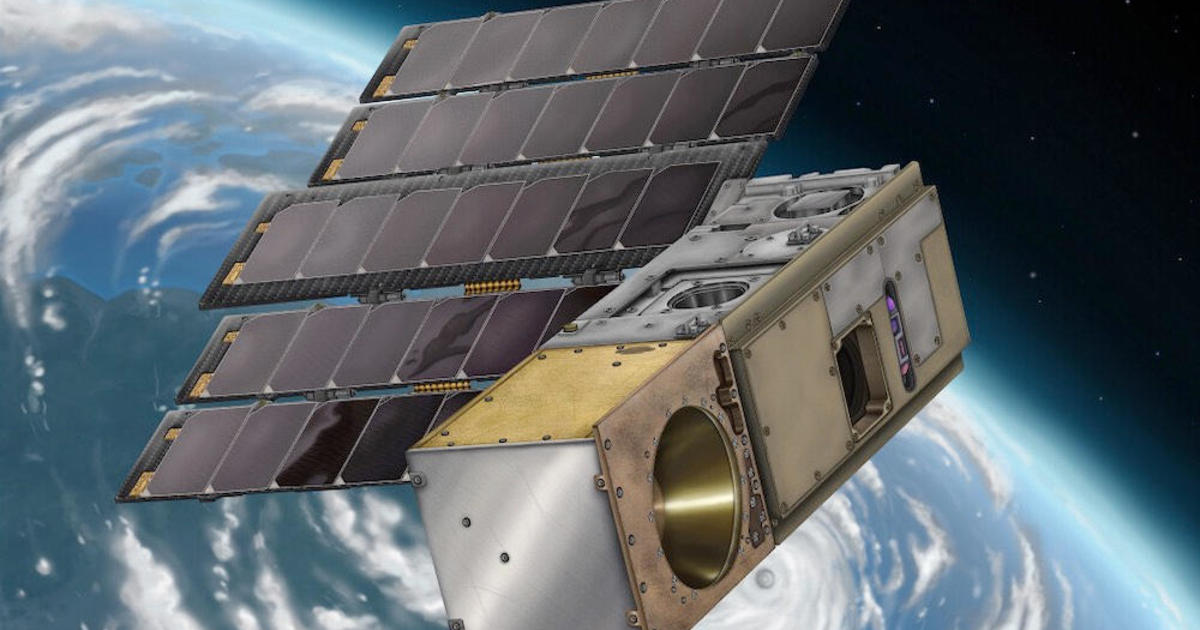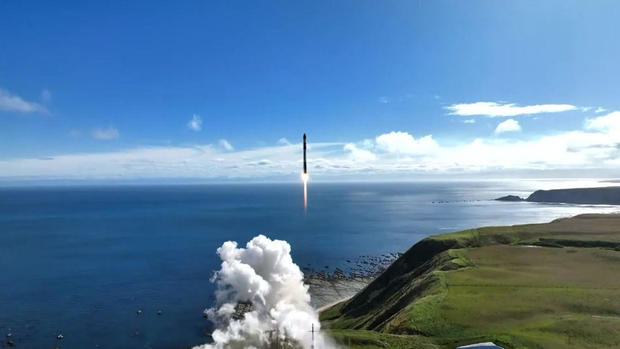[ad_1]
Rocket Lab launched two toaster-size satellites for NASA on Sunday, the first of four “cubesats” designed to provide hourly updates of typhoon and hurricane development in a bid to improve forecasting and provide new insights into how tropical storms evolve and intensify.
Rocket Lab
“The threat to our friends and neighbors is real and repeats every year,” said Ben Kim, a program executive with NASA’s Earth Science Division. The TROPICS mission, he said, “aims to improve our scientific understanding by obtaining microwave observations that allow us to see the inner structure of these storms approximately hourly.
“These observations will complement the existing weather satellites, and ultimately then can be tied to the broader understanding of the entire earth system.”
TROPICS, one of NASA’s more convoluted acronyms, stands for Time-Resolved Observations of Precipitation Structure and Storm Intensity with a Constellation of Smallsats. The bargain-basement $30 million mission takes advantage of miniaturized electronics and the evolution of cubesats capable of taking on big-ticket science.
The cubesats aren’t intended to replace larger, much more powerful and much more expensive weather satellites. But they offer a low-cost way to augment those “flagship” missions with complementary science and much shorter development times
“We utilize a balanced mission portfolio that ranges from the really large observatories, like Landsat 9 at around 6,000 pounds, down to the very smallest of satellites like TROPICS at around 12 pounds,” Kim said.
“This mix within our portfolio allows us to maximize the science per taxpayer dollar, and thus do more science than if we only focus on the large missions.”
The first two of six planned TROPICS cubesats were lost last year when their Astra rocket failed during the climb to space. NASA then moved the four remaining cubesats to Rocket Lab’s more reliable Electron in order to get them into orbit in time for this year’s tropical storm season.
Running about a week late because of stormy weather, the first of the two remaining missions got off to a picture-perfect start at 9 p.m. EDT Sunday with launch from Rocket Lab’s picturesque Mahia, New Zealand, launch site.
NASA
The 59-foot-tall carbon-composite rocket’s nine 3D-printed Rutherford engines pushed the booster out of the lower atmosphere before falling away and handing off to the rocket’s second stage, which put the craft into an initial parking orbit nine-and-a-half minutes after liftoff.
A third “kick” stage then finished the job, releasing TROPICS 3 and 4 to fly on their own about 33 minutes after launch. It was Rocket Lab’s 36th Electron launch and its 16th successful flight in a row.
If all goes well, Rocket Lab will launch TROPICS 5 and 6 before the end of the month to complete a four-satellite constellation. All four satellites will operate in 341-mile-high orbits carrying them about 30 degrees to either side of the equator, ideal for “revisit” observations of developing storms on an hourly basis.
William Blackwell, the TROPICS principal investigator at MIT’s Lincoln Laboratory, said getting microwave observations of growing storms, at the rapid revisit rates the cubesats provide, is critical to understanding the development and behavior of tropical storms.
.
“We’ve been making (such observations) for 40 years from space, but the thing that has eluded us is this ability to capture the dynamics of the storm,” he said. “So this new hourly cadence that we’ll get with the constellation is really going to push us forward in terms of what the observations are able to do to explain how things are changing in the storm.”
The observations, in concert with data collected by larger, more powerful weather satellites, are expected to “improve understanding of the basic processes that drive the storms and ultimately improve our ability to forecast track and intensity.”
[ad_2]
Source link






